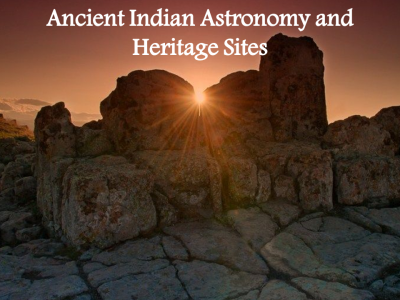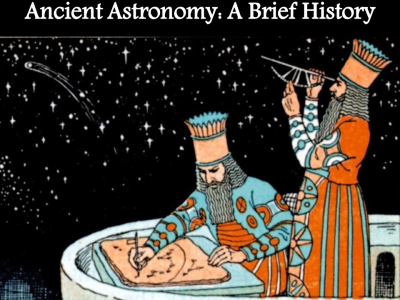
“The only certain thing about this world and life is our yearly calendar. Whatever happens, May will come after April, and January will hold the promise of a New Year and a new beginning.”
From ancient times, people, right when they were born, started pondering about the cycle of light and dark, that is, day and night, stars and patterns, which we call constellations. In the attempt of making a pattern, people started observing, analyzing, and using mathematical operations, which resulted in the counting of days per cycle of something, called a calendar.
Different people in different regions and times had different calendars of their own around the world such as Julian, Hindu, Hijri/Islamic, Buddhist, Japanese, Egyptian, Babylonian, Hebrew, Ethiopian, Jewish, etc. and then, at last, the presently used all over the world standardly in the Gregorian calendar.
The calendars were of different types: lunar, solar, lunisolar, solilunar, lunistellar, seasonal, and years with fixed length and not based on astronomical patterns. Here, you will read about the Babylonian calendar, Babylonians’ contribution to astronomy, and how it is different from other calendars.
Babylonian Calendar
Babylonia, which occupied southeastern Mesopotamia between the Tigris and Euphrates rivers, is the ancient cultural region. Because the city of Babylon was the capital of this area for so many centuries, the term Babylonia has come to refer to the entire culture that developed in the area.
They first settled in about 4000 B.C.E. Before Babylon’s rise to political prominence (1850 B.C.E.), the area was divided into two countries: Akkad in the northwest and Sumer in the southeast. Hammurabi (1792-1750 BC) was the king of the great kingdom Babylonian who flourished it.
Babylonian Calendar (Image Credits: Line.17QQ)
The Babylonian calendar was a lunisolar calendar with a year consisting of 12 lunar months. Each month began when a new crescent moon was first sighted low on the western horizon at sunset. An intercalary month was inserted at the end of the year to complete the solar cycle.
Months
Spring is the first season of the year. The year has three parts. Reš šatti is called “beginning”, mišil šatti as “middle”, and qīt šatti is known as “end of the year”. The word for “month” was arḫu. Nisanu, Ayaru, Simanu, Du’uzu, Abu, Ululu, Tashritu, Arakhsamna, Kislimu, Tebetu, Shabatu, Adaru were the Babylonian months’ names.
The year was observational till the 5th century BC. From about 499 BC, a lunisolar cycle of 19 years equaling 235 months has opted. This cycle was called the Metonic cycle. The name was kept after the Meton of Athens (432 BC) due to the belief that Meton probably learned it from the Babylonians.
In the cycle of 19 years, the month Adaru 2 was intercalated every three years, except in the year that was number 17 in the cycle when the month Ulūlu 2 was inserted. During this period, the first day of each month (beginning at sunset) continued to be the day when a new crescent moon was first sighted—but a specified number of days were never used in any of the months.
Days
The Babylonians celebrated every seventh day as a “holy day”, also called an “evil day”, starting from the first day of the month, i.e. sighting the new crescent moon when officials were not allowed to do some activities and “making a wish” was forbidden for common people.
The last day of the month, the 28th day is known as a “rest day” when offerings were made to different gods and goddesses, apparently at nightfall to avoid the prohibitions. There were three seven-day weeks, and the last week was used to be of eight or nine days which breaks the seven-day cycle.
It is believed that Egyptians adopted the Babylonian calendar and then modified it by having 12 months of 30 days each and then intercalating 5 extra days in the end to complete the solar cycle. Other than Egyptians, many other communities such as Assyrians were before Babylonians or Chaldeans (astronomers of Mesopotamia). There were others also who adopted this calendar.
Babylonian Calendar in Astronomy
During the early history of Mesopotamia, the recording or study of celestial objects was known a Babylonian Astronomy. It seemed to be focused on a selected group of stars and constellations. A numbering system based on sixty was used called a sexagesimal system.

Babylonian Astronomy and Astronomers (Image Credits: Science Photo Library)
As there were no calculators, calculating and recording the big and small numbers was very hard, which was simplified by this system. The modern practice that we use now of dividing a circle of 360 degrees into 60 minutes was initiated by the Sumerians.
A new empirical approach was developed by Babylonian astronomers to astronomy during the 7th and 8th centuries. These were the first ones who studied and recorded their belief system and philosophies. Their work used to deal with the ideal nature of the universe.
Whatever they predict about planetary systems, they employed an internal logic of themselves. This novel approach is referred to as the first scientific revolution by some of the modern scholars in the field of astronomy and philosophy. This approach was further adopted by Greeks and Hellens in astrology. They further developed it.
All the data that they predicted, studied, or observed was recorded on clay tablets that contained astronomical diaries, ephemerides, and procedure texts, out of which only a few fragments of Babylonian astronomy have survived.
Whatever has survived gives the idea that it was the first successful attempt at giving a refined mathematical description of astronomical phenomena. Also, all subsequent varieties of scientific astronomy in the Hellenistic world, in India, in Islam, and the West depend upon Babylonian astronomy in decisive and fundamental ways.
Old Babylonian Astronomy
Astronomy that was practiced during the First Babylonian dynasty (ca. 1830 BCE) and before the Neo-Babylonian Empire (ca. 626 BCE) is known as Old Babylonian Astronomy.
The first dynasty or people who recognized that astronomical phenomena are periodic were the Babylonians. They were the ones who applied mathematics to the predictions that they did in astronomy. The prediction of the length of daylight over a solar year and the mathematics behind it was found in the tablets dating back to the Old Babylonian period.
Those tablets were known as cuneiform tablets, also called the Enûma Anu Enlil. These are the oldest significant astronomical texts. One of them is the Venus tablet of Ammisaduqa. Over a period of 21 years, it lists the first and last visible risings of Venus. It gives evidence that planetary phenomena were recognized as periodic. It is exceptional because it is the earliest.
Those people developed zodiacal signs dividing the sky into three sets inhabiting constellations in each sector. The text given in tablets makes constellations arranging stars in strings that lie along with declination circles. It also measures right-ascensions or time intervals and employs the stars of the zenith, separated by given right-ascensional differences.
Dozens of cuneiform Mesopotamian texts were written, from which few are found with real observations of eclipses that are mostly from Babylonia.
Neo-Babylonian astronomy
In Mesopotamian history, the Chaldean astronomers developed astronomy after the Babylonians. Those are called Neo-Babylonian. This era was the era of the Neo-Babylonians, Achaemenids, Seleucids, and Parthians.
During the reign of Nabonassar (747–734 BCE), Babylonian observational quality and frequency started increasing, which made them work to discover a repeating 18-year Saros cycle of lunar eclipses. For example, Ptolemy, a Greco-Egyptian astronomer felt that the earliest usable observations began at this time. So, he used Nabonassar’s reign to fix the beginning of an era.

Saros Cycle (Image Credits: Universe Today)
The Seleucid Empire (323–60 BCE) was the last era in the development of Babylonian astronomy. To predict the motions of the planets, astronomers began to use goal-year texts in the 3rd century BC. The ominous phenomena, i.e., the repeating occurrences of each planet was compiled in these. At some time, astronomers could predict these phenomena directly without using any records or tablets as they keep on developing mathematical methods and models.
Arithmetical and geometrical methods
It seems that Chaldean astronomers believed that there is always some pattern or regularity in nature. Thus, they were interested in ephemerides and not in theories. It appears from the fact that Babylonian planetary theory lacks survival material.
Theories made by Babylonians were strictly empirical and arithmetical. It did not involve any geometry, cosmology, or speculative philosophy. Later, these things were seen in Hellenistic models. Babylonians believed in the philosophy dealing with the ideal nature of the early universe.
To compute the time and place of significant astronomical events, they employed arithmetical procedures. To describe the motion of Jupiter, some analysts say that Babylonian astronomers may be used geometrical methods, prefiguring the methods of the Oxford Calculators. Those analyses are in the form of cuneiform tablets dated between 350 and 50 BC in the British Museum, which is previously unpublished.
There is no evidence that they ever believed in a uniform circular motion of the celestial bodies, or say, planetary orbits were never dependent upon the theory of uniform circular motion. Whereas, in contrast, this is seen in Greek astronomy which was dependent upon cosmology.
Contributions made by the Chaldean astronomers during this period include the discovery of eclipse cycles, and Saros cycles (period of 18 years, 10, 11, or 12 days, and 8 hours) and many accurate astronomical observations. For example, they knew that motion of the sun is not uniform.
But did not know the reason, which we know today as Kepler laws. It is known that they had a significant influence on some astronomers like Ptolemy and the Greek astronomer Hipparchus along with some Hellenistic astronomers.
Heliocentric astronomy
The planetary model that survived from the time of Chaldean astronomers is the Hellenistic Seleucus of Seleucia (b. 190 BCE). It supports the Greek Aristarchus of Samos’ heliocentric model. But the method to prove the heliocentric system used by Samos was through reasoning whereas, it is said that Seleucus’ arguments were related to the phenomenon of tides.
He correctly theorized that the tides were because of the moon, and they varied in different parts of the world. Therefore, the height of tides depends on the position of the moon relative to the sun.
Seleucus was a contemporary of Hipparchus. Since there were some trigonometric methods available at that time, according to Bartel Leendert van der Waerden, he may have used them to determine the constants of a geometric model for the heliocentric theory. He may have even developed methods to compute planetary positions using that model.
Some of the has survived in Arabic translation. It was then referred to by the famous Persian philosopher Muhammad ibn Zakariya al-Razi (865-925). Except for this, no other original work of Seleucus or Greek translations is found.
Babylonian influence on Hellenistic astronomy
An immense amount of work has been found, which was done by ancient Greek and Hellenistic writers(including mathematicians, astronomers, and geographers) and preserved to date. Many cuneiform clay tablets have been found from the key archaeological sites of the 19th century.
Many of the tablets are related to astronomy, among which most of them are described by Abraham Sachs, which were later published by Otto Neugebauer in the Astronomical Cuneiform Texts (ACT). These tablets give the evidence that Greeks learned the aspects of astronomy from the Babylonians, writes Herodotus.
Other sources from Greek paradigms were like a stone having 365-366 holes, which represented the days in a year, and also, is evidence of adopting Babylonian astronomy. It is seen that classical and Hellenistic astronomy and Chaldean have very similar due to the exchange of information between them. The best-documented borrowings are those of Hipparchus (2nd century BCE) and Claudius Ptolemy (2nd century CE).
Influence on Hipparchus and Ptolemy
As Seleucus used Oxford calculators before, Hipparchus (and Ptolemy after him) computed the complete list of eclipse observations that covered many centuries. Chaldeans routinely made clay tablets. Later, Hipparchus and Ptolemy compiled them are known as the “diary” tablets.
Ptolemy starts his chronology with the first day in the Egyptian calendar of the first year of Nabonassar; i.e., 26 February 747 BCE. Calculations of planets’ orbital period and other calculations were also done by them. This relation was attributed by Ptolemy to Hipparchus, which was found in the earlier Babylonian clay tablets.
There are very many similarities between Hipparchus’ work and Babylonian practices. Some of them are listed below:
- First Greek was known to divide the circle in 360 degrees of 60 arc minutes.
- First consistent use of the sexagesimal number system.
- Use of the unit pechus (“cubit”) of about 2° or 2½°.
- Use of a short period of 248 days = 9 anomalistic months.
Means of transmission
You may have heard that people in the early times could tell them by watching the sun and some specific planets or constellations position in the sky. Some evidence found that during the late 5th century, Athens was perhaps, aware of Babylonian astronomy, astronomers, or the astronomical concepts and practices.
Later, Xenophon, a student of Socrates, documented in one of his texts telling his students to learn astronomy so much that they can determine the time of night from the constellations and some specific stars. Aratos referenced this in one of his poems, talking about the relation between zodiacal signs and time.
It seems likely that it was done by some unidentified Chaldeans, as it required profound knowledge regarding astronomy, language, etc. Now, the Babylonians dated their observations in their lunisolar calendar, in which months and years have unspecified lengths (29 or 30 days; 12 or 13 months).
At that time, they did not use a regular calendar like the Metonic cycle, which they did later. They started a new month based on observations of the New Moon, which made it very tedious to compute the time interval between events.
There is some probability that Hipparchus transformed these records to the Egyptian calendar. It uses a fixed year of 365 days (consisting of 12 months of 30 days and 5 extra days): this makes computing time intervals not that tedious as the previous one. All these observations were dated in this calendar by Ptolemy.
This conveys that Babylonians contributed a lot to Astronomy and Mathematics. Though not completely true, and also included their beliefs and rituals, the observations & calculations they made played a vital role in establishing the base and therefore, the future of astronomy.
Suggested Reading: Ancient Indian Astronomy and Heritage Sites
Author








Shalom sir,
I visited your website. It is ok. I am willing to share about the Complete Jewish History from Adam to CE 2136. Adam to 1st Empire (4234 BCE-626 BCE), 1st to last Empire (626 BCE – CE 1453), Ottoman kings to the British Rule (CE 1453 – 1914), The British rule to CE 1948, and PM’S of Israel (1948-2021). This history gives the occurrences of all historical events with respect to the Phases of the Moon from the beginning to this very day. I am willing to hear from you.
Thank you, Sir.
Jewish History: From 4234 BCE to CE 2136